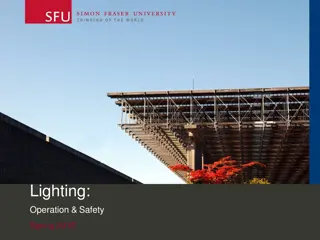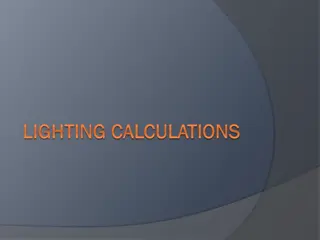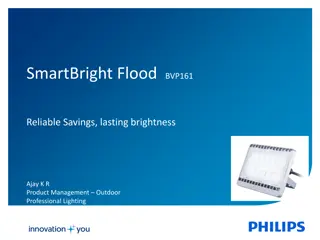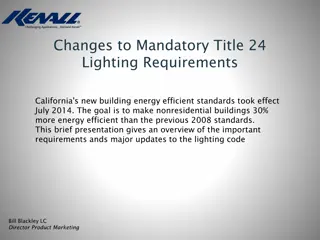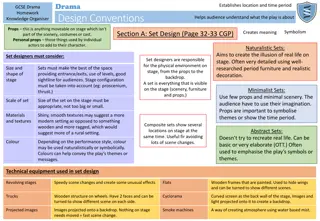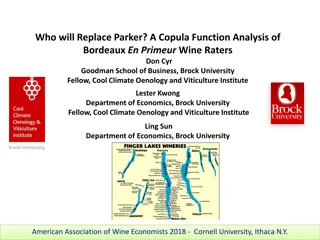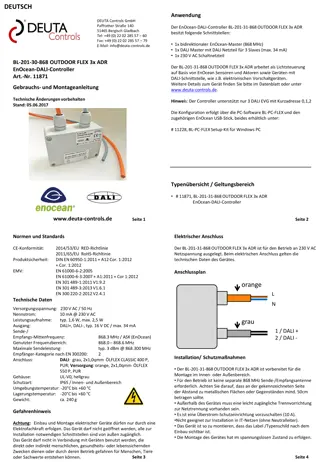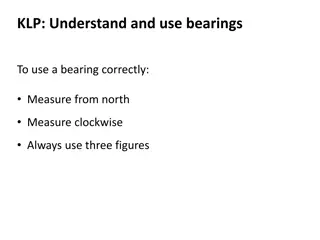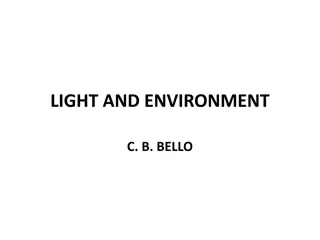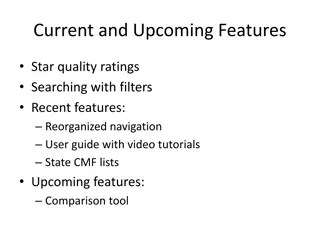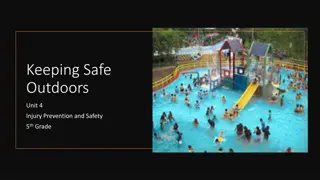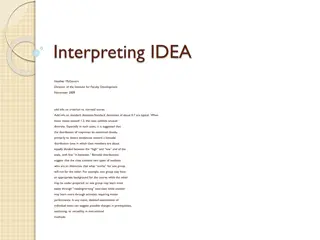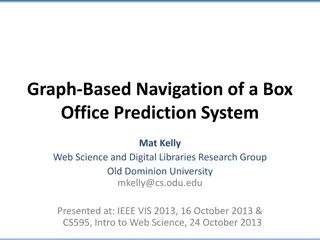Understanding Outdoor Lighting: Ratings, Design, and Guidance
Explore the importance of outdoor lighting in enhancing safety, security, and aesthetics while considering potential negative aspects such as light pollution and disturbance to natural habitats. Learn about BUG ratings, luminaire classification systems, and the impact of luminaire optics on lighting quality and visual tasks. Gain insights into how outdoor lighting can positively influence municipal economies and social experiences.
Download Presentation

Please find below an Image/Link to download the presentation.
The content on the website is provided AS IS for your information and personal use only. It may not be sold, licensed, or shared on other websites without obtaining consent from the author. Download presentation by click this link. If you encounter any issues during the download, it is possible that the publisher has removed the file from their server.
E N D
Presentation Transcript
Measurement and Application of BUG (Backlight, Uplight and Glare) Ratings for Outdoor Lighting Graeme G Lister and David M Keith 1 CORM 2013, Gaithersburg, MD
The Earth at Night 2 CORM 2013, Gaithersburg, MD
Outdoor Lighting Light for night time visual activities Safety/Security Improve lighting visibility on roadways Enhance beauty of architecture, monuments etc. Enhance social experience Positive influence on municipal economy 3 CORM 2013, Gaithersburg, MD
Potential Negative Aspects of Outdoor Lighting Nuisance for local residence Light Pollution Dark Sky, Astronomy Glare Disturbance of Natural Habitat Contribution to Carbon Footprint 4 CORM 2013, Gaithersburg, MD
Outdoor Lighting Design Luminaire Optics Luminaire Location Light where it is needed Lighting Quality Visual Tasks Aesthetics Safety Security 5 CORM 2013, Gaithersburg, MD
Outdoor Lighting Guidance IES Luminaire Classification System (LCS) for Outdoor Luminaires IES TM-15-11 JOINT IDA IES MODEL LIGHTING ORDINANCE (MLO) 6 CORM 2013, Gaithersburg, MD
Luminaire Classification System (LCS) Defines standard solid angles for evaluation and comparison of outdoor luminaires LCS: Uses existing photometric test data, easily incorporated into software tools Enables designers to evaluate and compare lumen distribution for various types of luminaire optics LCS provides guidance in designing outdoor lighting projects, but cannot account for variations in eye response and perception 7 CORM 2013, Gaithersburg, MD
Luminaire System Classification Three Primary Solid Angles Source: IES TM-15-11 8 CORM 2013, Gaithersburg, MD
Forward Light Secondary Solid Angle Pole mounting height H FL: d< 0.6H FM: 0.6H<d<1.7H FH: 1.7H<d<5.7H FVH: d>5.7H Source: IES TM-15-11 9 CORM 2013, Gaithersburg, MD
Backward Light Secondary Solid Angle Pole mounting height H BL: d< 0.6H BM: 0.6H<d<1.7H BH: 1.7H<d<5.7H BVH: d>5.7H Source: IES TM-15-11 10 CORM 2013, Gaithersburg, MD
Upward Light Secondary Solid Angle Source: IES TM-15-11 11 CORM 2013, Gaithersburg, MD
Backlight Ratings (Zonal Lumens) Uplight Ratings (Zonal Lumens) 12 CORM 2013, Gaithersburg, MD
Glare Luminance too high Luminance ratio too high - discomfort glare - reduction in visual performance Glare is in the eye of the beholder 13 CORM 2013, Gaithersburg, MD
Discomfort Glare 1. Luminance of the glare source 2. Size of the glare source 3. Position of the source in the field of view 4. Luminance of the background 14 CORM 2013, Gaithersburg, MD
Glare Ratings (Zonal Lumens) 15 CORM 2013, Gaithersburg, MD
250 W HID Luminaire Shoebox B2 U0 G2 16 CORM 2013, Gaithersburg, MD
Photometry BUG ratings based on photometric data , measured in IES-approved manner (e.g. LM-35- 02, HID and Incandescent) Luminaire lumens calculated based on measured intensities in specific solid angles (separation 2.5 deg.) about the luminaire. Rated power, <3% harmonics in wave form Avoid stray light 17 CORM 2013, Gaithersburg, MD
How Do We Measure Light? Quantity Direction Colour Time 18 CORM 2013, Gaithersburg, MD
The Trouble with the Lumen - Measures quantity only - Colour Blind (no spectral component) Forward Light: Upward Light Glare Need to know useful light Need watts, not lumens Spectra important: - Atmospheric reactions - Wildlife - Astronomy Need spectral information Age of population 19 CORM 2013, Gaithersburg, MD
Conclusions BUG ratings are a guide - quantitative, not qualitative Need for something to augment the lumen Multi-disciplinary approach (Industry, Municipalities, Researchers CORM can play a role in identifying new definitions 20 CORM 2013, Gaithersburg, MD
Thanks to: CORM David Keith Ceravision Ref: Luminaire Classification System For Outdoor Luminaires IES TM-15-11 21 CORM 2013, Gaithersburg, MD





